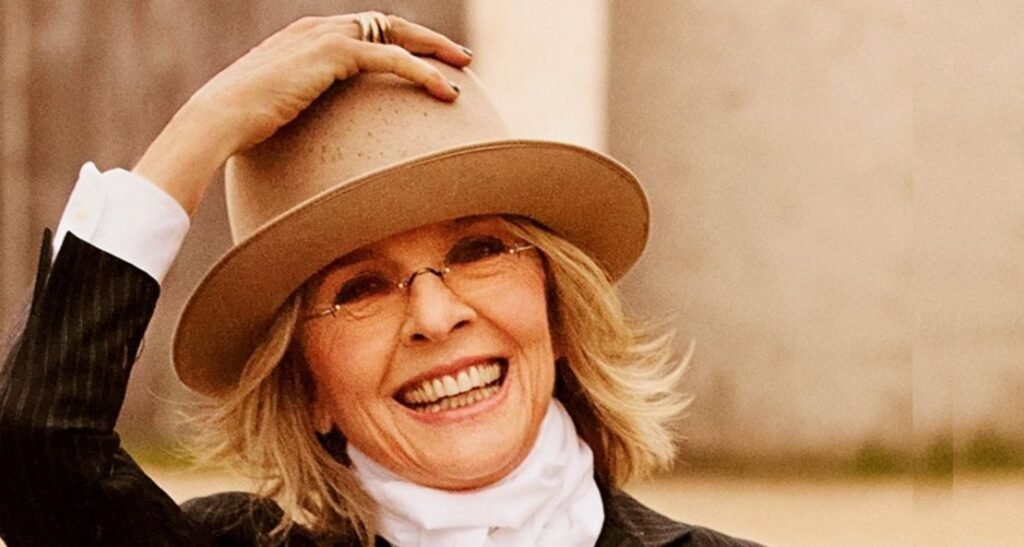Diane Keaton’s passing at 79 landed like a silence after laughter: brief, disorienting, and then full of echoes.
For half a century she made intelligence feel playful and vulnerability feel brave, shaping pop culture from Annie Hall’s menswear to Something’s Gotta Give’s late-life romance.
What follows is a celebration of 20 performances that show why her work lives on.
1) Annie Hall (1977)

Keaton’s most defining role doubles as a cultural detonation. The fashion (her own closet, famously), the “la-di-da” filler when nerves hit, the way a smile stalls at the edge of uncertainty—this is wit with a pulse.
You can feel the real history in the chemistry, which is why the jokes sting when the breakup lands. Her style ripple—loose trousers, vest, tie—reframed cool for women overnight, and it never left.
2) The Godfather Part II (1974)

The kitchen confession. The door slam. The final look. Keaton threads Kay’s private reckoning through a movie about public power.
When she tells Michael she ended the pregnancy—voice trembling but steady—the moral center of the trilogy finally speaks without compromise.
It’s one of the great sustained reactions in American film: horror giving way to resolve, love conceding to self-preservation.
3) The Godfather (1972)

Kay begins as the daylight in a shadowed world. Watch Keaton in the wedding sequence: alert, curious, a beat behind the family code she’s trying to decode.
By the time that door closes on her face, Keaton has charted a complete arc using almost nothing but stillness and the tiniest retreat in the eyes.
Critic David Thomson later called her presence “alive with uncompromising kindness,” a human counterweight to operatic violence (The Guardian obituary).
4) Reds (1981)

Louise Bryant isn’t a halo in historical fog; Keaton makes her a working mind. In salon debates she parries, in Petrograd she hardens, and in the wilderness she trudges—love and politics braided together.
The quiet scenes with Nicholson’s O’Neill unspool an entire off-screen life; the last stretch with Beatty’s Reed is pure endurance. The nomination felt inevitable; the grit felt earned.
5) Looking for Mr. Goodbar (1977)

Released the same year as Annie Hall, this is the whiplash. Keaton strips out the charm and plays Theresa like a match struck in a dark bar—hot, bright, unpredictable.
The film’s finale is infamous; what lingers is the way she walks into danger looking for something like freedom.
As The Guardian noted, her work here was described as “fearless,” part of a one-two that “signified a new kind of female star… independent, liberated, and sexually assertive” (quoted in the obituary).
6) Something’s Gotta Give (2003)

Erica Barry is competence undone. Keaton plays heartbreak as farce and then lets the farce bruise—those uncontrolled sobs that turn into a laugh you believe. It’s also a film about older desire shot without apology; Keaton and Nicholson meet like equals, spar like pros, and land something tender.
She later cited this era with special fondness, and outlets have reported it as a personal favorite among her own films see People’s remembrance piece on her “favorite among her iconic filmography,”
7) Manhattan (1979)

Mary Wilke could’ve been written as ice; Keaton plays warmth with sharp edges. Note the micro-hesitation before she retracts a barb, the amused self-check after a cutting line. Under the urbane cadence is a person testing who she wants to be. It’s the charisma of thinking out loud.
8) Love and Death (1975)

Philosophy as ping-pong. Keaton fires off Sonja’s logic knots like she’s enjoying every syllable, then undercuts it with a physical gag two beats later.
It’s the comic rhythm—breath, look, pivot—that makes the spoof sing. Few actors can switch from Dostoevsky joke to pratfall and keep dignity intact; she makes that tightrope look easy.
9) Sleeper (1973)

Luna begins as airhead performance art and ends up a rebel with comic timing. The future is silly; Keaton treats it like a playground, not a prop shop. Watch how she “tries on” seriousness and discovers she likes the fit—an arc told in throwaway gestures and delighted side-eyes.
10) Baby Boom (1987)

J.C. Wiatt is a corporate animal learning to share space with a baby and a self she didn’t plan. Keaton’s physical comedy (conference calls while rocking a crib; splattered purée and a power suit) is matched by the soft click of perspective shifting. The final pitch—career on her terms—is pure 80s aspiration done with wit.
11) The First Wives Club (1996)

Annie starts as apologetic and ends in a white-suit strut. Keaton calibrates the comic neurosis so it doesn’t curdle, then lets confidence creep in.
The “You Don’t Own Me” finale plays like an encore she’s been building toward the whole film: friendship as reclamation anthem.
12) Father of the Bride (1991) & Part II (1995)

Nina Banks is the thermostat of the household. Keaton keeps her amused, exasperated, mournful, and maternal—often in the same kitchen scene.
Opposite Steve Martin’s spiraling dad, she’s the hand on the shoulder and the raised eyebrow that says “breathe.”
Keaton has openly expressed affection for this family-first run of films; the tenderness shows on screen (see People’s remembrance for her reflections on late-career favorites: People).
13) Manhattan Murder Mystery (1993)

Carol Lipton is curiosity with a magnifying glass. Keaton plays the thrill of having a theory like most actors play romance.
The whisper-sprints down hallways, the closet stakeouts, the “I’m not nosy, I’m vigilant” energy—proof that her comic instincts stayed nimble decades in.
14) Marvin’s Room (1996)

Bessie is care work personified. Keaton resists sentimentality and lets the character’s generosity speak: the way she listens, the unflashy humour, the acceptance that arrives without trumpets.
Surrounded by Meryl Streep and a young Leonardo DiCaprio, she centers the film by refusing to perform sainthood.
15) Shoot the Moon (1982)

Faith Dunlap is the part of a breakup we pretend not to see—the pettiness, the bargaining, the anger that feels like clarity until it doesn’t. Keaton allows ugliness without losing empathy. The plate-smash is catharsis; the quiet after is the point.
16) Crimes of the Heart (1986)

Lenny Magrath is the sister who holds the stories together and forgets herself in the process. Keaton leans into the smallness—hesitations, self-edits—so that when Lenny claims joy, it lands. In a trio of Oscar-caliber actresses, she’s the low-frequency note you miss when it’s gone.
17) Interiors (1978)

Renata’s armor is articulation. Keaton drains the color from her usual tics and plays a woman policing her voice and failing her heart. In a film of hushed rooms and glass edges, she finds ache without speeches.
18) Play It Again, Sam (1972)

Linda is the light that pulls a lonely critic back into motion. Keaton’s early-career sparkle is everywhere—timing, ease, the sense she’s fully listening.
Around this period, Woody Allen remembered her as “adorable, funny, totally original in style, real, fresh … [she] lit up a boulevard,” a line that captures how quickly audiences felt they knew her (The Guardian obituary).
19) The Little Drummer Girl (1984)

Charlie is an actress recruited into a moral maze. Keaton plays the profession-as-training ground: how pretending can turn into believing. The thrill here is watching her peel back layers of naiveté and choose a self under pressure.
20) Book Club (2018)

A late-career wink. Keaton treats Diane (the character) as a cousin to Diane (the icon): romantic, self-conscious, game for reinvention. It’s comfort cinema elevated by veteran chemistry—proof that some stars age into a joke, while she aged into a welcome.
Why She Stays With Us
Because she made thinking sexy and kindness modern. Because she let awkwardness breathe until it became style. Because even when the camera cut away, you felt the afterglow of a mind at work. The industry tributes keep calling her “original”; the films above show what that means.
(For more screen picks each week, dip into Neon’s Sunday Watch.)


